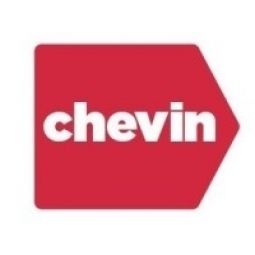技术
- 功能应用 - 车队管理系统 (FMS)
适用行业
- 建筑物
- 城市与自治市
适用功能
- 维护
- 采购
用例
- 车队管理
- 交通模拟
关于客户
本案例研究中的客户是密苏里州行政办公室。该办公室作为州长办公室的行政和管理部门,协调州政府的中央管理职能。该办公室履行州政府运作所需的广泛重要职能。这些职能包括集中会计、预算、信息技术、采购服务、国家建筑维护以及人员分类管理。该办公室负责管理超过5000辆车辆和资产的车队,这是一项艰巨的任务,需要高效、有效的管理系统。
挑战
密苏里州行政办公室作为州长办公室的行政和管理部门,在管理其 5,000 多辆车辆和资产方面面临着挑战。该办公室负责州政府运作所需的一系列重要职能,包括集中会计、预算、信息技术、采购服务、州建筑维护以及人员分类管理。然而,事实证明,跟踪所有国家车辆的任务是一项重大挑战。该办公室需要一个系统,不仅可以帮助他们有效管理车队,还可以提供更多信息和问责制。
解决方案
密苏里州行政办公室决定实施车队管理系统 FleetWave 来应对挑战。该系统一年前实施,此后一直用于管理该州的车队和资产。 FleetWave 已被证明是一个很好的系统,为办公室提供了更多的多功能性来管理其车队。它还提供了更多有关国家车辆和资产的信息,从而增强了问责制。 FleetWave 系统为办公室带来了良好的体验,他们发现它是车队管理工作中的宝贵工具。该办公室还参加了 2022 年 Chevin 客户会议,以更多地了解该系统并更好地了解 Chevin 团队。
运营影响

Case Study missing?
Start adding your own!
Register with your work email and create a new case study profile for your business.
相关案例.

Case Study
Turning A Stadium Into A Smart Building
Honeywell created what it called the “intelligent system” for the National Stadium in Beijing, China, turning the venue for the opening and closing events at the 2008 Summer Olympics into a “smart building.” Designed by highly controversial artist Ai Weiwei, the “Bird’s Nest” remains one of the most impressive feats of stadium architecture in the world. The 250,000 square meter structure housed more than 100,000 athletes and spectators at a time. To accommodate such capacity, China turned to Honeywell’s EBI Integrated Building Management System to create an integrated “intelligent system” for improved building security, safety and energy efficiency.

Case Study
Energy Saving & Power Monitoring System
Recently a university in Taiwan was experiencing dramatic power usage increases due to its growing number of campus buildings and students. Aiming to analyze their power consumption and increase their power efficiency across 52 buildings, the university wanted to build a power management system utilizing web-based hardware and software. With these goals in mind, they contacted Advantech to help them develop their system and provide them with the means to save energy in the years to come.
.png)
Case Study
Smart Street Light Network (Copenhagen)
Key stakeholders are taking a comprehensive approach to rethinking smart city innovation. City leaders have collaborated through partnerships involving government, research institutions and solution providers. The Copenhagen Solutions Lab is one of the leading organizations at the forefront of this movement. By bringing together manufacturers with municipal buyers, the Copenhagen Solutions Lab has catalyzed the development and deployment of next-generation smart city innovations. Copenhagen is leveraging this unique approach to accelerate the implementation of smart city solutions. One of the primary focus areas is LED street lighting.

Case Study
Buoy Status Monitoring with LoRa
The Netherlands are well-known for their inland waterways, canals, sluices and of course port activities. The Dutch Ministry of Infrastructure indicates that there are thousands of buoys and fixed items in and near water environments that would profit from IoT monitoring. One of the problems with buoys for example, is that they get hit by ships and the anchor cable breaks. Without connectivity, it takes quite some time to find out that something has happened with that buoy. Not to mention the costs of renting a boat to go to the buoy to fix it. Another important issue, is that there is no real-time monitoring of the buoys at this moment. Only by physically visiting the object on the water, one gains insight in its status.

Case Study
Barcelona Case Study
Barcelona’s heavy traffic and its associated high levels of pollution were the primary factors that motivated some companies and universities to work on strategies for improving traffic in the city centre. Bitcarrier is one of the technologies involved in the In4Mo Project, whose main objective is to develop the applications that form the core of smart mobility, one of the fundamental pillars of the smart city concept.








